Meet Sarah, a senior level HR professional who is feeling the pressure to help her organization shift its people strategy in response to the changes brought on by the global COVID pandemic and its aftermath.
She feels overwhelmed when she thinks about the expanded role HR and L&D leaders have stepped into – as they function as strategic partners to the C-suite; creating new policies around in-person, remote, and hybrid work; developing the skillsets required for leading geographically dispersed teams effectively; advocating for employees with rapidly evolving needs and expectations; and retaining workers with the “Great Resignation” happening.
Sarah realizes these changes have created new rules not only for the business but also for the culture in the organization.
She understands that she needs to rethink her approach to training. Leadership is no longer just for individual leaders at the top. To attract, retain, and prepare talent for the future, organizations are expected to provide equitable access to opportunities for development. It’s no longer optional, but rather table stakes for employers to provide these avenues. There is a need for broader and quicker organizational alignment, and Sarah knows that traditional leadership development fails to support this kind of agile workplace.
But how to change the old paradigms? How does she find ways to support accelerating leadership development throughout the organization? How can the HR function meet the growing demands placed upon it, even if the department’s bandwidth hasn’t increased? Even more challenging, how can she and her HR team provide access to relevant, timely training for dozens, hundreds, or even thousands of leaders who are spread out across multiple locations?
How do you accelerate leadership development?
Rethink Your Approach to Training
Can you empathize with Sarah’s reality? If you’re like the clients we interact with regularly, then the answer is probably yes. In today’s business environment, every employee needs to be able to execute the strategy, placing a priority on scaling and accelerating leadership development and creating a common leadership language and practice.
As our white paper explains, such scaling is not a singular program, but rather a sweeping initiative that requires a whole-systems view. It requires a significant commitment across the organization. Your internal team may not be resourced to tackle the challenge, especially in a short timeframe.
3 Keys to Accelerate Leadership Development
Here are 3 steps we recommend to help HR and L&D professionals succeed at scaling and accelerating leadership development.

1. Start by planning your leadership strategy.
Organizations should start with their business strategy and then identify the related strategic leadership drivers (choices about how to be positioned to take advantage of strengths). From there, focus on the leadership implications of the strategy. For example, if your business strategy involves geographic expansion, your leaders will need to have learning agility, resilience, and the ability to lead dispersed and virtual teams.
Too often, leadership development scaling initiatives are rolled out without aligning with the business strategy. Avoid this mistake. As you think about scaling and accelerating leadership development, ask what business opportunities and challenges demand a leadership solution. Consider what organizational priorities you want your development efforts to support, and how you could evaluate the success of your investment in leadership development.
2. Provide access to relevant content for accelerating leadership development across the enterprise.
Once the strategy is in place, focus on building a learning architecture that will better support scaling development across your entire population of leaders. It’s important to have clarity about the varying needs and investments that will be required at different levels.
Remember that people learn in different ways, so you should provide a mix of formats and modalities that work for different people at different levels or with different learning styles – from highly personalized development over a longer period of time; to brief, internally led skill-building workshops; to self-directed, self-paced digital delivery. No matter the mode, it’s vital to create a common leadership language around the critical skills needed for successfully achieving your organization’s strategy.
One silver lining of the pandemic is that connecting with your employees from their homes or offices is easier than ever. The downside is that your employees are likely stressed, depleted, and under-resourced. Simply providing access to hours of content that has not been carefully curated or aligned with your employees’ day-to-day reality won’t benefit them, or your organization.
By partnering with a solution provider equipped with robust content that has proven impact, your organization can access high-quality leadership development experiences and scale them quickly across a large audience. When choosing a partner, look for one who is future-focused – capable of conducting cutting-edge research and turning it into programs and products that can be easily deployed, enabling you to create a common leadership language around the critical skills for success linked to your strategy.
3. Leverage the right internal and external talent.
Consider mixing outsourcing with insourcing for accelerating leadership development in your organization.
In today’s complex market, leaders often express concern that their internal resources may not be fully prepared for the challenge of championing an initiative and developing dozens, hundreds, or even thousands of leaders in a short timeframe. HR and L&D teams don’t always have the tools to provide meaningful leadership development in a way that’s scalable – to ensure equitable access to all talent – and customizable – to align with organizational KPIs.
You may need to seek the support of an external partner, in which case it’s critical to gain alignment between your internal training talent and the external firm or organization providing support. The role of a leadership development partner should be to provide a comprehensive package of trusted, flexible, and actionable content that your team can roll out on the appropriate schedule – freeing up the bandwidth of your internal training talent to provide insight on tailoring the content to your organization’s unique needs.
Also, think about involving business leaders who can cascade down the key leadership messages to their teams. This helps organizations maximize internal leadership development while offering invaluable insights for team members.
Accelerating Leadership Development Through Licensing
For example, at CCL, we started working with one client organization at the top. After creating customized learning journeys for the senior team, we designed specific solutions for the levels below, emphasizing critical leadership skills for the rest of the organization. We then trained the internal facilitators in the organization, and they led the training internally, scaling and disseminating key leadership skills across the enterprise, at their own pace.
Similarly, other clients have opted to license our content, often at key times to fulfill specific needs. For example, we partnered with one government agency during the pandemic to provide their burned-out employees with a library of content they could access asynchronously that was focused on providing their employees the tools and techniques to become more resilient and bring their best selves to work. We helped the client on a strategy to recruit cohorts of participants from across functions, leader levels, generations, and social identities to foster an open environment of sharing and rapport-building with colleagues they normally wouldn’t interact with. In just a few weeks, the organization was able to support hundreds of employees and scale best practices in resilience-building across the organization, building connections and trust across during a difficult time.
With these examples in mind, your HR team can also effectively scale and accelerate leadership development at your organization, thereby increasing access to development and preparing your people — and your business — for the future.
Author
Originally posted in CCL’s Leading Effectively Blog. Eckerd College has been a network associate of CCL since 1981.




